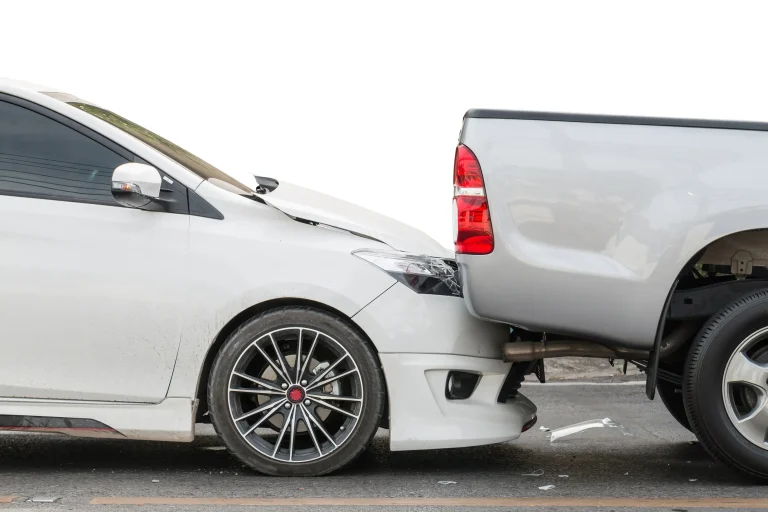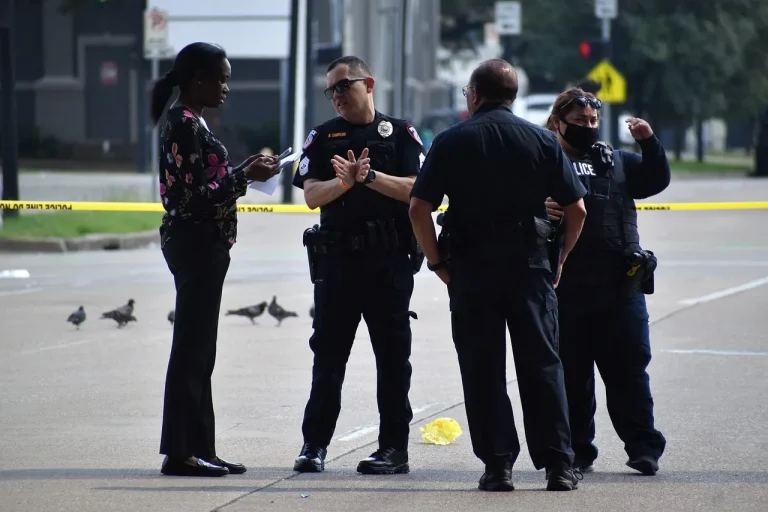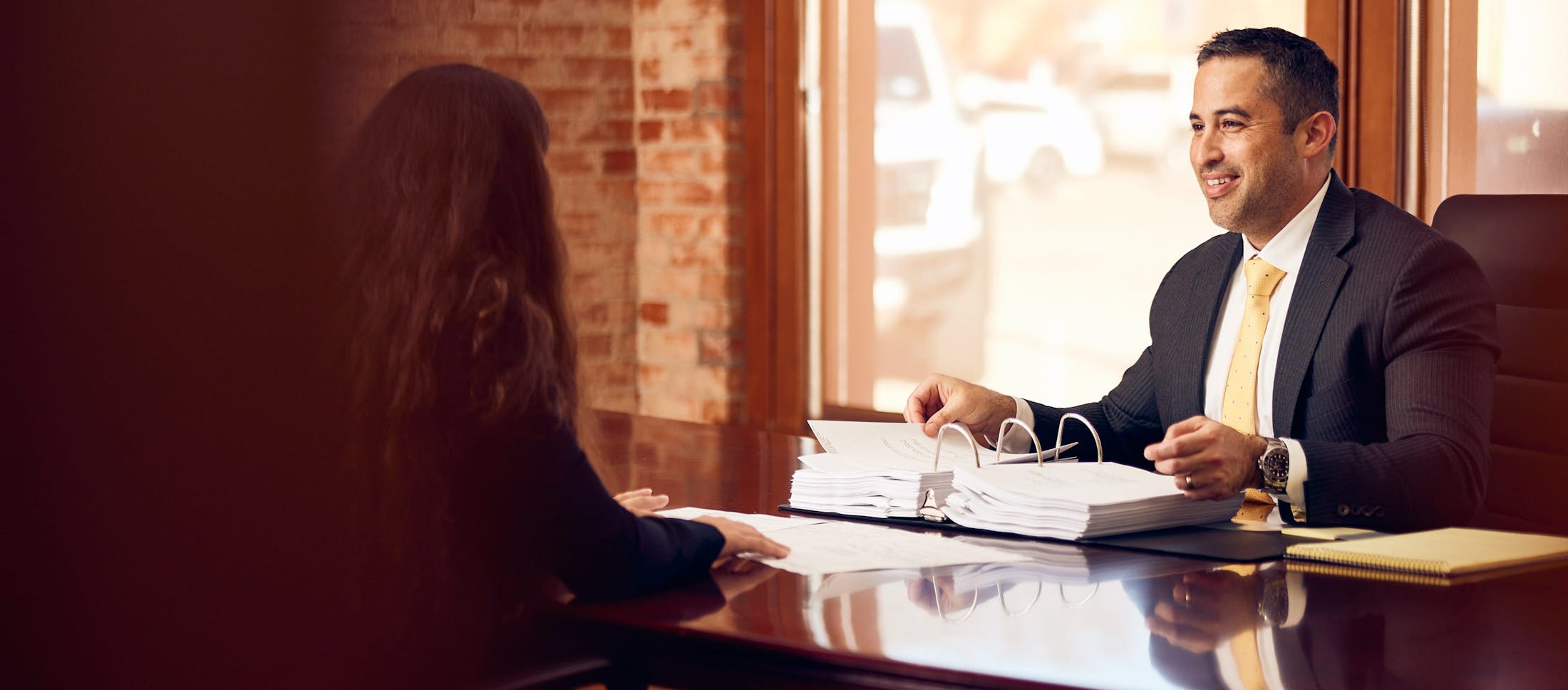How Important are Eye Witness Statements in a Car Accident Claim?
 Eyewitness statements can be the cornerstone of a car accident claim, providing crucial corroboration of the events that unfolded. When you’ve been involved in a car accident, the details can become blurred, and it’s easy to forget or misremember key aspects of the incident. Eyewitnesses, however, can provide an objective account of what happened, which can significantly strengthen your case. Their testimony can help establish fault, clarify the sequence of events, and provide insight into factors that may have contributed to the accident.
Eyewitness statements can be the cornerstone of a car accident claim, providing crucial corroboration of the events that unfolded. When you’ve been involved in a car accident, the details can become blurred, and it’s easy to forget or misremember key aspects of the incident. Eyewitnesses, however, can provide an objective account of what happened, which can significantly strengthen your case. Their testimony can help establish fault, clarify the sequence of events, and provide insight into factors that may have contributed to the accident.
If you’ve been involved in a car accident, don’t underestimate the power of eyewitness testimony. It can make a significant difference in the outcome of your claim. Contact Brian C. Gutierrez at 979-271-5338 today for a free consultation to discuss how to gather and utilize this vital evidence for your claim. Brian is an experienced attorney who understands the importance of eyewitness testimony and can help you through the legal process to ensure that your rights are protected and that you receive the compensation you deserve.
The Weight of Eyewitness Testimony in Your Car Accident Claim
When the unexpected occurs and vehicles collide, the ensuing car accident claim relies heavily on the clarity and strength of eyewitness testimony. Bearing witness to the drama of an accident scene, these statements are not just peripheral narratives but the cornerstone of your claim. They serve as the eyes for the blind spots in our stories, adding texture and depth to the outline of events that insurance adjusters and courts must discern.
Insurance companies give substantial weight to eyewitness testimony, which can significantly influence settlement amounts. In the realm of personal injury cases, the testimony of a car accident witness becomes crucial evidence, providing much-needed corroboration to a client’s account, especially when it’s supported by the tangible aftermath of vehicle damage and financial loss.
The Power of Corroboration
The impact of witness statements extends beyond mere confirmation; they support your personal injury claim with credibility. In the tangled narratives that emerge post-collision, a credible witness serves as an anchor, their objective insights often bringing to light crucial details that might otherwise be lost in the chaos.
Eyewitness testimony is a delicate thread, susceptible to the stress and rapid unfolding of events, reminding us that even the most perceptive observer is human. When multiple car accident witnesses converge, their combined accounts can paint a more accurate depiction of the accident, solidifying your narrative and transforming it from a singular viewpoint to a unified confirmation of the events.
Insurance Adjusters and Eyewitness Accounts
Insurance adjusters, those calculators of risk and scrutinizers of detail, place a high premium on the unbiased account of an eyewitness. It’s their testimony that can pivot an accident claim from a contested dispute to a validated account of what happened. The perspective of a third-party witness, without a personal stake or financial interest in the situation, is a beacon of objectivity that can lead to higher settlements if their statements align with the injured victim’s version of events. With the adjusters’ eyes firmly on the credibility of these accounts, the testimony of car accident witnesses can be the deciding factor in how compensation is negotiated and awarded.
Resolving Disputes Over Fault
 Amidst the aftermath of car accidents, disputes over fault can arise like storm clouds, darkening the path to a fair settlement. Eyewitness statements possess the power to pierce through these clouds, shedding light on the negligence of the at-fault driver. Their unbiased perspectives can resolve conflicting testimonies, discrediting false narratives and establishing a timeline that aligns with the truth.
Amidst the aftermath of car accidents, disputes over fault can arise like storm clouds, darkening the path to a fair settlement. Eyewitness statements possess the power to pierce through these clouds, shedding light on the negligence of the at-fault driver. Their unbiased perspectives can resolve conflicting testimonies, discrediting false narratives and establishing a timeline that aligns with the truth.
When memories are blurred by the traumatic impact of the accident, these statements serve as a beacon of clarity, ensuring that the parties involved are not lost in their own confusion but guided toward resolution.
The Crucial First Steps Following a Car Accident
The immediate aftermath of a car accident can feel like moving through a fog of confusion and urgency. Amid the rush of adrenaline and the flurry of activity, certain steps are critical—not just for your safety, but for the strength of your future car accident claim. From ensuring safety and calling authorities to documenting the scene, these first steps lay the groundwork for your legal journey ahead. They lay the foundation for your legal case.
Ensuring Safety and Calling Authorities
The moments following a car accident are crucial. The first and most immediate concern is to check for injuries and ensure the safety of everyone involved. For minor accidents, move vehicles to a safe area and use hazard signals to alert other drivers, deploying flares or reflective triangles if necessary.
If injuries are present, or if the accident is serious, it’s imperative to call for medical assistance, as the documentation of injuries at the scene is vital for both health and legal reasons. Always remember that the well-being of individuals takes precedence over all else at this stage.
Documenting the Scene for Legal Purposes
Once safety is assured, it’s time to turn your attention to legal self-protection by documenting the accident scene. Capture everything:
- The position of the vehicles
- Skid marks
- Road conditions
- Traffic signals
- Any property damage
This visual evidence can be instrumental in piecing together the events that led to the crash, providing clarity and support to your claim.
Witnesses at the scene can supplement this with their observations, adding another layer of detail to the documentation. The evidence collected here, including witness testimony, will speak volumes when it comes time to present your case, ensuring that the truth of what occurred is visible for all to see, especially if that person is your only witness. A well-prepared witness statement can be invaluable in such situations.
The Emotional Aftermath: Connecting with Your Feelings Post-Accident
 The collision of metal and the shattering of glass mark not only physical damage but an emotional upheaval that can linger long after the accident scene has been cleared. As one handles the aftermath, a tumultuous mix of emotions—sadness, anger, worry, fear—can cloud judgment and hinder decision-making. It’s in these moments of vulnerability that the support of eyewitnesses serves a dual purpose: not only do they corroborate the factual account, but they also offer emotional validation, acknowledging the trauma that might otherwise go unrecognized.
The collision of metal and the shattering of glass mark not only physical damage but an emotional upheaval that can linger long after the accident scene has been cleared. As one handles the aftermath, a tumultuous mix of emotions—sadness, anger, worry, fear—can cloud judgment and hinder decision-making. It’s in these moments of vulnerability that the support of eyewitnesses serves a dual purpose: not only do they corroborate the factual account, but they also offer emotional validation, acknowledging the trauma that might otherwise go unrecognized.
The importance of addressing emotional well-being is paramount, often underestimated, yet as vital as physical recovery following such events.
Shock and Stress
The immediate aftermath of a car accident can leave one reeling, caught in the grip of shock and stress. In this disorienting haze, the presence of eyewitnesses can offer a steadying hand. Their independent perspective can diffuse the initial shock, providing reassurance and a sense of stability when it’s needed most. The comfort of having witnesses can ease the stress of accident victims, providing a sense of relief during the confusion.
Their factual information can help maintain calm and order, grounding the victims in reality as they begin to process the traumatic event.
The Value of Validation
In the echo chamber of a car accident claim, where voices vie for truth, the testimony of an eyewitness can resonate with the power of validation. It is their objective perspective that can counterbalance attempts by opposing parties to dispute your recollection of events. When your own memories are called into question, the presence of a witness who corroborates your account can help you feel heard and understood, a crucial step in the emotional journey post-accident.
The credibility of these witnesses, influenced by factors such as their proximity to the accident and their character, becomes a key player in the courtroom and during negotiations, lending weight to your claim.
Gathering Eyewitness Statements: A Step-by-Step Guide
In the wake of a car accident, time is of the essence, and gathering eyewitness statements becomes a race against the clock. Memories are like footprints in the sand—clear at first but easily washed away by the tides of time. It is crucial, then, to capture these recollections while they are fresh, ensuring that the account remains untainted by the passage of time or the influence of others.
Securing Contact Details
The first step in the witness collection process is to secure thorough contact details. It’s not enough to have a name; you need a way to reach out and pull that witness back into the narrative when the time comes. Gather basic details such as:
- Full names
- Phone numbers
- Home addresses
- Email addresses
This information is essential for future contact.
The location of each witness during the accident can add important details to their account, making the picture clearer when you need it most. If you can’t remember a name, jotting down a license plate number can be just as useful to ensure you can contact everyone who saw what happened.
Recording the Witness Account
Once you’ve established a line of communication, the next crucial step is to record the witness account. In today’s digital age, the tools for capturing a statement are often at our fingertips. A smartphone can serve as a recorder, capturing the voice or even the image of the eyewitness as they recount what they saw. If a written statement is provided, ensure that the witness signs and dates the document, solidifying its validity and protecting the integrity of the account.
Remember, these recordings are not just files; they are the voices of truth that will speak on your behalf when the time comes.
Ensuring Accuracy and Detail
The final piece of the puzzle in gathering eyewitness statements is to ensure their accuracy and detail. The location of the witness, their activities at the time of the accident, and their perspective all play a critical role in determining the reliability of their testimony. When approaching witnesses, it’s paramount to do so with respect and without pressure, as the quality of their recollection can make a world of difference in your claim.
Attorneys will often revisit the accident site to find additional witnesses, ensuring that every possible angle is covered and every detail is accounted for in building your case.
Unveiling the Truth: How We Can Help Interpret Eyewitness Testimony
Eyewitness testimony is a crucial component of a car accident claim, and at Brian C. Gutierrez, our legal team is well-versed in the art of deciphering these accounts. Our personal injury case experience lies in not just collecting these statements but in meticulously analyzing them to craft a narrative that bolsters your case and brings the truth to light.
We understand that each eyewitness account is a piece of a larger puzzle. It’s our job to fit these pieces together, creating a coherent picture that supports your claim. Allow us to demonstrate how we can take these individual narratives and, with precision and legal acumen, construct a compelling case on your behalf.
Analyzing Evidence
The interpretation of eyewitness testimonies requires a keen eye and a methodical approach. Our legal team employs the I-I-Eye method—an analytic framework that encompasses interviews, identification procedures, and environmental factors—to evaluate the accuracy of these statements. Expert witnesses, with their specialized knowledge, provide additional layers of analysis that bolster the credibility of the testimony.
Professional investigators play a crucial role, in conducting thorough investigations to elicit detailed and dependable accounts that can stand up to scrutiny in a courtroom. Education about perception complexities, such as cross-racial identification biases, is also imparted to minimize prejudicial factors that could affect the judgment of jurors.
Building a Compelling Narrative
Constructing a compelling legal narrative requires more than just facts; it requires a storyteller’s touch. Eyewitness testimonies are woven into the fabric of your case, each thread adding strength and color to the overall picture. We take great care to assess the reliability and potential biases of each statement, ensuring that the narrative we build is as accurate as it is persuasive. Our approach is meticulous, integrating these statements with other evidence to articulate the strongest argument for your car accident claim.
The result is a narrative that not only tells your story but does so with an authority that can sway adjusters, judges, and juries in your favor.
When Witnesses Aren’t Available: Alternative Strategies
Not every car accident claim is bolstered by the presence of eyewitnesses. In some instances, you may find yourself without this crucial support. But all is not lost—there are alternative strategies that can fortify your claim, ensuring that the lack of eyewitnesses does not equate to a lack of evidence.
From leveraging visual evidence to utilizing police reports, these alternatives can play a pivotal role in supporting your version of events and demonstrating the negligence of the other driver.
Leveraging Visual Evidence
Visual evidence, such as surveillance and dashcam footage, can serve as a silent witness to the events leading up to and during the accident. Brian C. Gutierrez often turns to these sources when eyewitness testimonies are absent. The footage provides an unbiased and factual account of the incident, capturing moments and details that may have been overlooked or forgotten.
Additionally, photographs and videos of vehicle and property damage, along with repair estimates and invoices, help us to paint a clear picture of the tangible impact of the accident. Proper management of this evidence is essential, as car accident claims can span over long periods, and every piece of visual evidence becomes a cornerstone in the case narrative we build for our clients.
The Role of Police Reports
When the human element is missing from your claim, police reports step in, offering a concrete account of the incident. These reports, generated by the responding authorities, provide a preliminary assessment of fault and document the circumstances surrounding the accident. As an objective and authoritative source of information, the police report is a critical piece of the puzzle in determining liability and the extent of damages, especially when eyewitness accounts are not in the picture.
It’s important to obtain, review, and, if necessary, correct this report to ensure it serves your claim to the best of its ability. Remember, this report may also contain witness information that you may have missed at the scene, providing you with additional resources to support your case.
Personalized Assistance: How Our Team Supports You
After a car accident, the path to recovery—both physical and financial—can be daunting. It’s a path that requires not just legal experience but a personalized approach that recognizes the unique circumstances of your case. Our team, led by Brian C. Gutierrez with over 15 years of trial law experience, provides that level of support, guiding clients through the complexities of their claims with skill and compassion.
Whether it’s negotiating with insurance companies or presenting your case in court, our goal as an insurance company is to provide you with representation that not only wins your case but also respects and understands the journey you’ve been through.
Tailored Legal Representation
Each personal injury claim is as unique as the story behind it, and that’s why tailored legal representation is key. With an in-depth understanding of personal injury and car accident cases, Brian C. Gutierrez offers services that are finely tuned to the needs of Texas families, drawing on his extensive trial experience in every county and district court within Brazos County.
Brian C. Gutierrez’s track record of successfully handling over 1,000 personal injury cases in Texas is a testament to the dedicated and effective legal services our team offers.
No Upfront Fees – Our Promise
The financial burden of a car accident claim can be overwhelming, and we understand that. That’s why our firm operates on a contingency fee basis, meaning you won’t pay us any legal fees unless we win a monetary award in your case. This approach aligns our financial interests directly with the success of your case, ensuring that we are fully motivated to pursue the maximum compensation possible on your behalf.
Our ‘No Upfront Fees’ promise is our commitment to you. It offers the peace of mind that you can seek the justice you deserve without the worry of immediate legal costs. Trust us to handle the financial risk, so you can focus on your recovery and well-being.
Contact Us
It’s clear that eyewitness accounts are essential—they provide the crucial evidence that can make or break a case. Eyewitness statements not only corroborate your narrative but also provide emotional support, affirming the reality of your experience. Our dedicated team at the law office of Brian C. Gutierrez is committed to amplifying your voice and fortifying your claim with the most compelling evidence available. When eyewitnesses are scarce, we are adept at deploying alternative strategies to illuminate the facts of your case. It’s not merely about the story of what occurred; it’s about presenting a narrative that is irrefutable in the eyes of the law. If you find yourself in the aftermath of a car accident, take the first step toward justice and call Brian C. Gutierrez at 979-271-5338 for a free consultation. Let us help you by using eyewitness accounts to build a strong car accident case and secure the compensation you deserve.
Frequently Asked Questions
HOW IMPORTANT IS A WITNESS IN A CAR ACCIDENT?
A car accident witness is crucial as they can provide important details and evidence that can help determine fault and damages in the accident. Their account can fill in important blanks for the investigation.
HOW DOES WITNESS CREDIBILITY AFFECT A CAR ACCIDENT CLAIM?
Having credible witnesses can significantly impact a car accident claim by providing crucial evidence and helping to determine the most credible account of the accident. They play a key role in resolving conflicts and discrepancies in the accounts of the drivers involved.
WHAT SHOULD EYEWITNESSES TO AN ACCIDENT BE ASKED TO PROVIDE?
Ask eyewitnesses to provide information such as their location at the time of the accident, a description of what they saw, and any conversations they overheard after the incident. Additionally, it may be helpful to have them draw a diagram or map of the accident scene to better understand their perspective.
WHAT STEPS SHOULD I TAKE IMMEDIATELY AFTER A CAR ACCIDENT?
After a car accident, prioritize safety for everyone involved, call for medical help if necessary, move vehicles to a safe location, and start documenting the scene with photos and videos for legal reasons.

